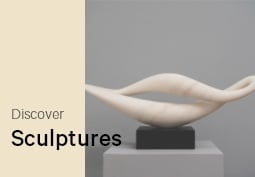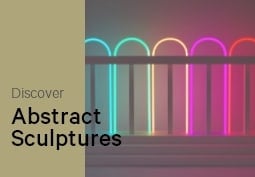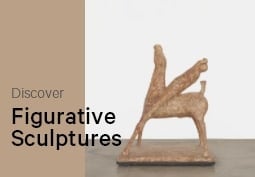Articles and Features
Top 10 Land Art and Earthwork Pioneers
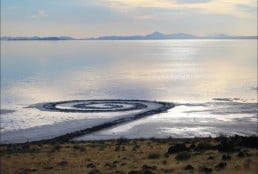
Land Art is a practice or form of art production that utilises natural materials or sites the work outside in various settings in order to interact with nature in some way. Sometimes known also as environmental art, or even earthworks, the movement of land art emerged in the 1960s and gained in popularity and momentum throughout the following decade. Land art even changed the definition of what an art work could be, much like the readymade had done earlier in the century, but in addition expanded the boundaries of art in terms of the material used and the siting of it. Whilst the key element of land art was often its monumentality and its position in a site-specific context, it also related closely to conceptual art in that the planning and photo documentation of execution and final results could often be exhibited in a gallery context, even if the work itself was located elsewhere.
During the 1960s and 1970s, periods of dramatic unrest, political foment and social protest, land art sought to critique and rail against the overt commercialisation of art and culture. Through its very nature land art could reject the museum or gallery as the accepted venue to host and investigate artistic production, whilst simultaneously by its focus on the objecthood of the materials, closely overlapped with some of the concerns of minimalism, a slightly earlier antecedent of which land art is sometimes considered a kind of offshoot.
Even though the concerns of the land art movement centered around rejection of the commercialisation of art-making, it is likely this emergent trend would not have gained traction without the burgeoning ecological movement of the time. Coinciding with this rejection of urbanism and its associated life choices, land art often espoused various utopian and spiritual yearnings for Planet Earth as the home of mankind.
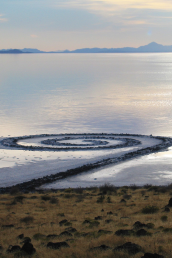
Courtesy Robert Smithson Foundation.
1. Robert Smithson
No survey of land art would be complete without including the seminal contribution of Robert Smithson. After an early career as a painter where he was influenced by the Expressionist painters of the downtown scene in NYC, Smithson modified his practise in 1964, when his work became influenced and aligned with those of the Minimalists. His new work of this time began to use combinations of materials to form three dimensional sculptural compositions, resulting in a series of ‘non-sites’ works in which earth and rocks collected from treks to a specific area were installed in the gallery as sculptures, often incorporating maps, bins, mirrors, glass and neon. Smithson became best known for the earthworks Spiral Jetty (1970), Broken Circle/Spiral Hill (1971), and Amarillo Ramp (1973). With these monumental constructions he forever changed received notions of sculptural form in contemporary art by removing art from the gallery context altogether, moving it into, and part of, the uncultivated landscape. A provocateur by nature, Smithson was fascinated by the concepts of duality and entropy. Spiral Jetty is an earthwork sculpture constructed in April 1970 and was built on the northeastern shore of the Great Salt Lake near Rozel Point in Utah entirely of mud, salt crystals and basalt rocks. The work forms a 1,500-foot-long (460 m) anti-clockwise coil jutting from the shore of the lake. It took six days to construct and multiple pieces of heavy construction machinery to haul 6,650 tons of rock and earth into the lake. The work was actually constructed twice; after contemplating the result for two days Smithson called the crew back and had the shape altered to its present configuration, an effort requiring moving 7,000 tons of basalt rock during an additional three days of construction. At the time of its donation to the Dia Art Foundation in 1999 Spiral Jetty had spent most of its existence submerged beneath the lake’s waters and barely visible save from the air. Beginning in the early 2000s, however, sustained drought in Utah caused the water level to recede, and Spiral Jetty became visible for the first prolonged period in its history.
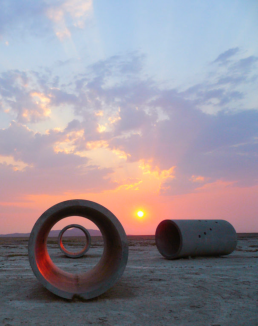
2. Nancy Holt
Nancy Holt was an American artist most known for her public sculpture, installation art and land art. Throughout her career, Holt also produced works in other media, including film and photography, and wrote books and articles about art. In 2017 the Holt/Smithson Foundation was founded to continue the creative and investigative spirit of hers and her husband Robert Smithson’s works, who, over their careers, developed innovative methods of exploring our relationship with the planet, largely through expanding the limits of monumental earthwork and sculptural practice. She began her artistic career as a photographer and video artist, and it is from this perspective that she approached her later earthworks, which were conceived as devices for tracking the positions of the sun, earth and stars, and for relating these celestial elements to a fixed point on earth. Today Holt is most widely known for her large-scale environmental works, Sun Tunnels and Dark Star Park. Sun Tunnels consists of four massive concrete tunnels (18 feet long and nine feet in diameter), which are arranged in a crossed configuration to form a total length of 86 feet (26 m) along each axis. Each tunnel reacts to the sun differently, aligned with the sunrise, sunset, of the summer or winter solstice. Visitors approaching the site can see the tunnels from as far away as two kilometres, as the massive concrete forms differentiate themselves strongly from the barren plane on which they are situated. The tunnels not only provide essential shelter from the scorching desert sun, but once inside the dazzling light effects within the tunnels can be seen. The top of each tunnel has small perforations, forming variously on each the constellations of Draco, Perseus, Columba, and Capricorn, respectively. The diameters of the holes differ in relation to the magnitude of the stars represented. These holes cast spots of daylight in the dark interiors of the tunnels, which appear almost like the star constellations themselves, projected against the interior surface.
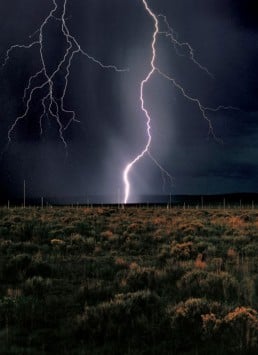
3. Walter de Maria
Exploring the relationship between relative and absolute, Walter de Maria used geometric forms to create a series of repetitions in his sculptures, installations and land works. Trained initially as a painter, he turned his art quickly toward sculpture with a practise at the intersection of Minimal Art, Conceptual Art and Land Art. Influenced by his peers such as Donald Judd and by Dadaism, Suprematism and Constructivism, he developed his interest toward viewer-interactive, serialised and numbered sculptures. Using basic geometric components and following mathematical sequences, he arranged forms to create a series of repetitions. His artworks in cast and polished steel, are set in polygonal structures that convey to the viewer a sense of absolute. His most known land work, Lighting Field (1977), is a grid of one mile by one kilometer installed in a remote area of the New Mexico desert. The grid consists of four hundred polished stainless steel poles, measuring over twenty feet tall and with a pointed tip defining a horizontal plane, the point of attraction for lightning strikes. The visitor can both walk inside the grid or look from afar and is subjected to a physical and psychic experience. Art, landscape and nature meet in a series of intense optical effects, that change according to time and space.
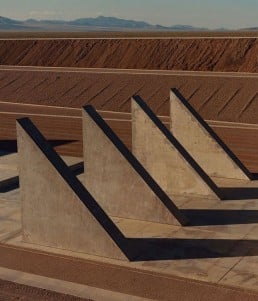
4. Michael Heizer
Well known for his capacity to build large-scale works and explore the relationship between positive and negative space, Michael Heizer has been a prominent figure of the land art movement since his twenties in the late 1960s. Through his monumental excavations and constructions, Heizer analyses scale and forms to build works evoking fear and awe at the same time capable of outlasting humanity. Starting his career with what he called “negative painting”, a series of shaped canvases, he made his first negative land work North, East, South, West in the late 1960s. This work consisted of a series of geometrically-shaped holes dug in the Sierra Nevada desert and represented his first foray into monumental earthworks.
Heizer has since then realised several large-scale projects including Nine Nevada Depressions (1968), Primitive Dye Paintings (1969) and Double Negative (1969). In 1972 Heizer started working on his most ambitious monument, a magnum opus called City. Situated in the Nevada desert, this land work/sculpture/monument to civilisation is inspired by Native American Traditions and ancient pre-Colombian ritual cities like Teotihuacan. The project is a mile and half long and constructed of rocks, sand and concrete primarily mined from the surrounding land and mixed on site. Built over more than four decades, City is nearing completion and will open to the public in 2020.
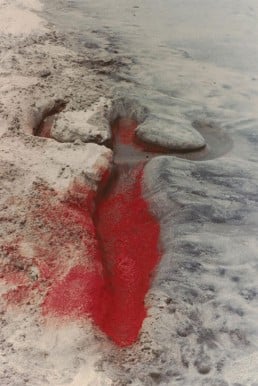
Courtesy Museum of Contemporary Art Chicago.
5. Ana Mendieta
This Cuban feminist artist is known as one of the pioneers of the Land Art, especially for the manner the human body relates to and returns to nature. With a production of over 200 works, Mendieta used her body and the earth as a medium to create controversial sculptures. Her works are multi layered and highly philosophical, relating to multiple art movements such as performance and body art, conceptualism and land art. The artist’s legacy tells a story of human equality, of cyclical sequences between life and death and of the omnipresence force of mother nature.
Through her photo and video series Silueta (1973-1980), Mendieta became one of the pioneers of earth art. In this project, the artist modelled her body into different landscapes to show the indissoluble connection between the earth and human nature. Travelling for several years across Iowa and Mexico, Mendieta used natural materials to bind her body with the four elements in order to sculp herself with and in mother nature. This layered dialogue between landscape and flesh became the artist’s way to re-shape fragmented identities of the oppressed female artist, refugee identity politics and questions of ecology and the body.
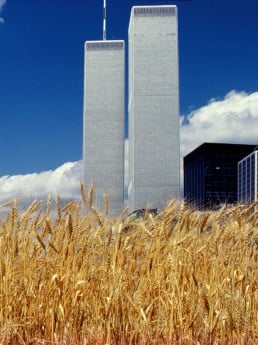
6. Agnes Denes
Agnes Denes is a Hungarian-born American conceptual artist based in New York. She is known for works in a wide range of media – from poetry and philosophical writings, to complex diagrams rendered both by hand and by computer (which she terms Visual Philosophy), sculpture, and international environmental installations, such as Wheatfield—A Confrontation (1982), a two-acre wheatfield in downtown Manhattan. Born in Budapest, Hungary in 1931, her family survived the Nazi occupation and moved to Sweden in the mid-1940s. When she was a teenager, they relocated again to the United States. She has said that she began to focus on the visual arts because the repeated changes in language she was forced to confront in her formative years compromised her verbal skills.
A primary figure among the concept-based artists who emerged in the 1960s and 1970s, Denes was a pioneer of several art movements, often simultaneously investigating science, ecology, philosophy, linguistics, psychology, poetry, history, and music. As a early practitioner of environmental art, she created Rice/Tree/Burial in 1968 in Sullivan County, New York which, according to the renowned art historian and curator Peter Selz, was “probably the first large scale site-specific piece anywhere”.
Her seminal work is considered to be Wheatfield – A Confrontation, which catapulted awareness of her practice to international prominence. It was created during a four-month period in the spring and summer of 1982 when Denes, with the support of the Public Art Fund, planted a field of golden wheat on two acres of rubble-strewn landfill near Wall Street in lower Manhattan (now the site of Battery Park City and the World Financial Center). In May 1982 after months of preparations the wheat field was planted two blocks from Wall Street and the World Trade Center and facing the Statue of Liberty. Two hundred truckloads of dirt were brought in and 285 furrows cleared of rocks and garbage and dug by hand. The seeds hand sown and the furrows covered with soil. The field was maintained for four months, weeded, fertilized, sprayed and an irrigation system set up. The crop was harvested on August 16 1982 when it yielded over 1000 pounds of healthy, golden wheat.
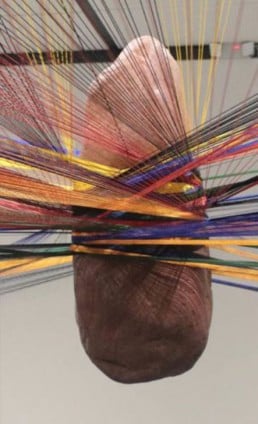
Courtesy Museo de Arte Contemporáneo Lima.
7. Milton Becerra
Milton Becerra is a Venezuelan land artist who pioneered this form of art in Latin America in the 1970s. From 1973 to 1980 he was an assistant in the workshops of the renowned masters Carlos Cruz-Diez and Jesús Soto. He participated in his first group exhibition when he was still a student, whilst studying trends such as Concrete, Neo, Kinetic, Generative and Op-art. In 1973 he opened his first solo exhibition based on the arrangement of different hexagonal modules in space based on Kasimir Malevich’s White Cube theory, and also on Ludwig Wittgenstein’s Tractatus logico-philosophicus concept; investigating colours, their behaviour in space and the division of forms through colour ranges. Extremely attached to Venezuelan culture and Amazonian ecology, Becerra applied his artistic practice to a specifically political agenda, related to environmental concerns particular to the region. During the 1970s Becerra created A Blanket for the Meadow in Caracas’ residential area, Lomas de Prados del Este; and Analysis of a Process in Time, where he denounced the effects of pollution and its deterioration of the landscape. Towards the 1980s Becerra relocated to Paris and developed a new perspective based largely on his research and perception of the Amazonian Yanomami tribe’s customs. That is when his signature works with yarns, fabric and light were intertwined with other organic elements like rocks, and led him to develop series as Chin-cho-rro (1995), Gotas (Drops 1990) and Nidos (Nests 1995).
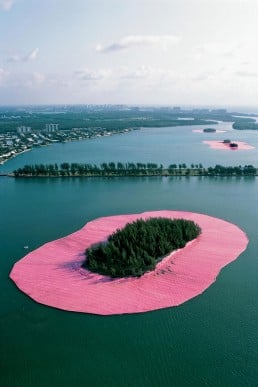
Courtesy Christo and Jeanne- Claude.
8. Christo and Jeanne-Claude
The practice of transformative wrapping is the signature of this land art couple. Through breathtaking scale and monumental displays of fabrics and plastic, they have created numerous visually impressive, and often controversial, outdoor large scale works. With the aim to completely transform landscape into an entirely new environment and sculptural form, and to elicit an immediate and powerful aesthetic impact in the visitor consisting of both the sublime and joy in beauty, the temporary outdoor sculptures have forced a reconsideration of land art’s potential and impact.
Previously attributed only to Christo, the outdoor art projects were retroactively accredited to both Christo and his wife Jeanne-Claude in 1994. Their most well-known monumental projects include the wrapping of a million square feet of coastline near Sydney, Wrapped Cost (1968-69); Valley Curtain (1970 – 72), the 400 meters long cloth stretched across Rifle Gap; the 5.5 meters high and 39.4 kilometres long Running Fence (1972-76), the Surrounded Islands (1980 – 83). In this work, 603,870 square meters of floating pink propylene fabric was floated on the water to surround eleven islands in Biscayne Bay, Miami. Recent projects include The Gates, (2005) in Central Park, NY.
After Jeanne-Claude’s death in 2009, Christo continued to pursue the couple’s projects, including Big Air Package (2013), The Floating Piers (2016) and The London Mastaba (2018).
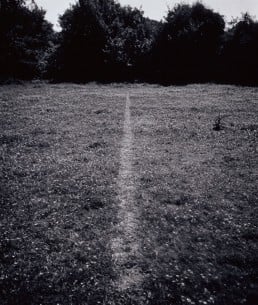
9. Richard Long
This British sculptor entered the land art pantheon by making the landscape the main field of his work. In the late 1960s, driven by a desire to use the landscape in new ways, the artist started his direct engagement with nature by using his walk as a medium. In a series of repetitive movements or long solitary walks, Long aimed to break the language and ambition of art and to bring it to a more primitive, personal and elemental level. His objective was to personally represent the potential of a pure dialogue between human and nature.
The subjects of this radical conceptual land art project are time, space and distance, extended to a vast scale. From 1969, Long began to explore his walking practice in wilderness regions around the world, including a project in the Alps. In the 1980s, while pursuing his large land sculpture projects, Long started using natural materials in indoor settings. He produced sculptures out of organic materials or mud paintings using his handprints applied to the wall. Pursuing the notion of art as a temporary object, he works with slate, driftwood, or stones, often sourced in their original setting. These circles and line artworks are ephemeral and made to be reclaimed by nature. The sole records of the projects are the photographs, maps and text work in which Long collect places names, records of materials and measurements of time and distances.
His very first land art work, A Line Made by Walking (1967), represents the beginning of Long’s use of the walk as medium. This straight line in a grass field is a sculpture created out of the artist’s constant and repetitive movement, where the compositional element consists solely of broken down grass juxtaposed with the unaffected areas either side of the walked on strip.
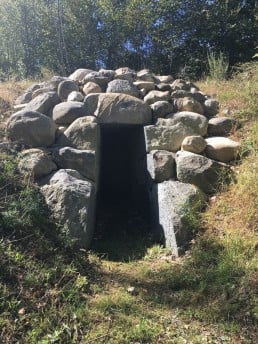
10. Andy Goldsworthy
Working in and with nature, Andy Goldsworthy is a prominent land art sculptor and photographer. He focuses on creating projects that enhance the beauty of nature, the effect of time and the relationship between the human and the land. Following the concept that humans are an unrelenting part of nature, Goldsworthy uses the earth as a co-author of his Minimalistic aesthetic practice.
His work can be divided into permanent and temporary projects. The latter are made out of organic and ephemeral materials and, following the life cycle, are meant to disappear. Through branches, leaves, rocks and ice, he creates several repeating patterns such as spirals, circles, or snaking lines. The ephemerality that is at the core of these projects is a reflection of a constantly changing natural world and fragile ecology. The sole documentation that remains is the colored photographs taken by the artist.
His more recent permanent site-specific installations differ in scale, tension and lifetime, but they always represent a fundamental investigation of the surrounding landscape and the beauty of its inherent materials.
In recent years, Goldsworthy has started exploring the practice of performing art, conceived by him as personal acts often in public places.
